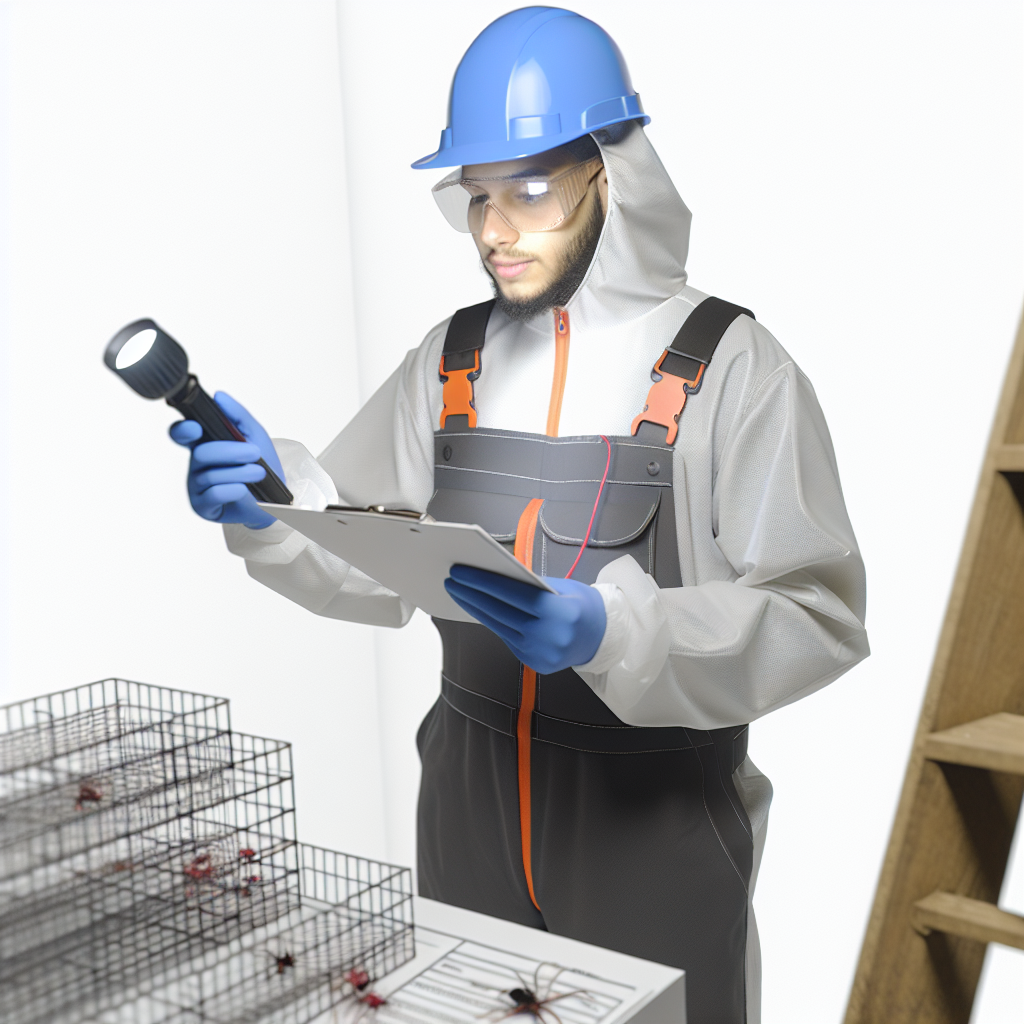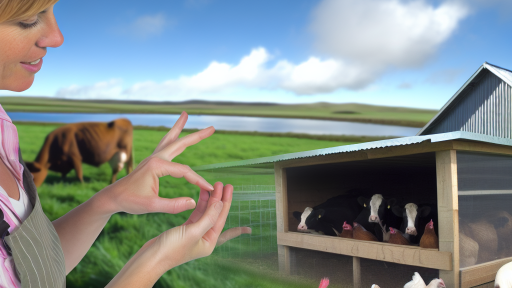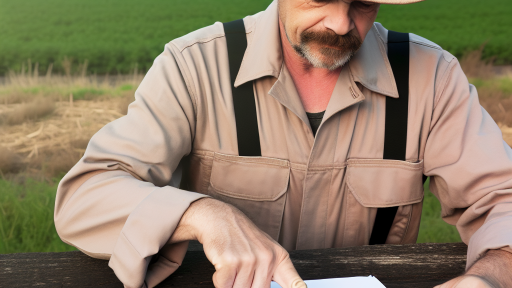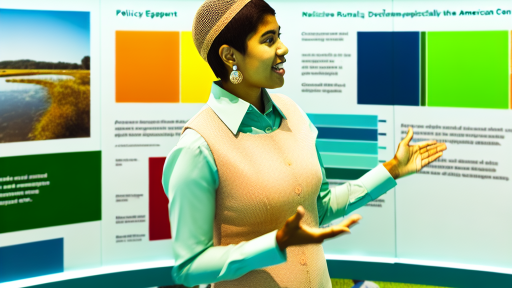Introduction to Integrated Pest Management
Definition and Importance
Integrated Pest Management, or IPM, is a comprehensive pest control strategy.
It combines biological, cultural, physical, and chemical tools for effective control.
This approach minimizes environmental impact while maximizing crop yields.
Main Objectives
The primary goal of IPM is to manage pest populations effectively.
Moreover, it aims to reduce reliance on chemical pesticides.
It also focuses on promoting sustainable agricultural practices.
Key Principles of IPM
- Monitoring and Identifying Pests: Accurate identification is crucial for effective management.
- Understanding Pest Life Cycles: Knowledge of life cycles helps in timing control measures.
- Utilizing Threshold Levels: Establishing action thresholds prevents unnecessary interventions.
Methods of IPM Implementation
IPM employs various methods to manage pest populations.
These include cultural practices, biological control agents, and mechanical controls.
Chemical controls are used only when necessary and in targeted applications.
Benefits of IPM
IPM offers several advantages to farmers and the environment.
It reduces pesticide use, leading to cost savings for growers.
Additionally, it enhances crop health and improves biodiversity.
IPM methods also contribute to the preservation of beneficial organisms.
Importance of IPM in Sustainable Agriculture
Enhancing Crop Health
Integrated Pest Management (IPM) enhances crop health effectively.
This approach prioritizes natural pest control methods.
Transform Your Agribusiness
Unlock your farm's potential with expert advice tailored to your needs. Get actionable steps that drive real results.
Get StartedIt reduces the reliance on chemical pesticides.
Farmers can maintain healthier ecosystems through IPM practices.
Additionally, this method fosters beneficial pest populations.
Ultimately, it creates a balanced agricultural environment.
Minimizing Economic Losses
IPM helps minimize economic losses in agriculture.
Farmers can manage pest populations before they become problematic.
As a result, they protect their yields from severe damage.
Moreover, this strategy can lower production costs.
By reducing pesticide usage, farmers save money.
Thus, IPM contributes to overall farm profitability.
Promoting Environmental Health
Adopting IPM promotes environmental health and sustainability.
This method minimizes chemical runoff into waterways.
Consequently, it protects aquatic ecosystems and biodiversity.
Furthermore, IPM techniques encourage soil conservation.
Healthy soil promotes better crop production over time.
Overall, IPM supports a healthier planet for future generations.
Enhancing Food Safety
IPM enhances food safety in agricultural practices.
Reduced pesticide use leads to lower chemical residues on food.
Therefore, consumers benefit from safer produce.
Moreover, this method addresses public health concerns effectively.
Farmers adopting IPM are proactive in ensuring quality crops.
Ultimately, this builds consumer trust in agricultural products.
Key Principles of IPM
Understanding Integrated Pest Management
Integrated Pest Management (IPM) combines various control strategies effectively.
This approach reduces pest populations sustainably.
Showcase Your Farming Business
Publish your professional farming services profile on our blog for a one-time fee of $200 and reach a dedicated audience of farmers and agribusiness owners.
Publish Your ProfileAdditionally, it minimizes environmental impacts.
Preventive Practices
Prevention is the cornerstone of IPM.
Start by identifying potential pest problems early.
Use resistant plant varieties whenever possible.
Proper sanitation helps eliminate pest habitats.
Moreover, crop rotation diversifies plantings and disrupts pest life cycles.
Monitoring and Assessment
Regular monitoring is vital in IPM.
Use traps and visual inspections to assess pest populations.
This data informs timely and effective management decisions.
Monitoring helps reduce unnecessary pesticide use.
Control Strategies
IPM employs a variety of control methods.
These include biological, cultural, physical, and chemical strategies.
Biological control uses natural predators to manage pests.
Cultural practices optimize agricultural techniques to deter pest infestations.
Physical controls involve barriers or traps to prevent pests.
When necessary, apply chemical controls judiciously and responsibly.
Evaluation of Effectiveness
Evaluate the effectiveness of management actions regularly.
This step determines if the goals of IPM are being met.
Adjust strategies based on monitoring results and pest response.
This adaptive management approach ensures long-term success.
Explore Further: Food Safety Compliance Strategies for Small Farmers
Steps in Developing an IPM Program
Understanding Integrated Pest Management
Integrated Pest Management focuses on sustainable pest control strategies.
It combines various practices to manage pests effectively.
This approach reduces reliance on chemical pesticides.
Moreover, it minimizes risks to human health and the environment.
Assessing the Pest Problem
Start by identifying the specific pest affecting your crops or environment.
Conduct thorough inspections to gather data on pest populations.
Document the extent of the infestation and any damage caused.
This information forms the basis for your management decisions.
Monitoring and Identification
Regular monitoring helps track pest populations over time.
Use traps and visual inspections to identify pests accurately.
Employ field guides to differentiate between beneficial and harmful species.
Accurate identification is crucial for effective management strategies.
Evaluating Environmental Conditions
Analyze the environmental conditions that contribute to pest outbreaks.
Consider factors like weather, soil health, and crop diversity.
Understanding these elements helps in devising appropriate management tactics.
Developing an Action Plan
Based on your assessment, create a tailored action plan.
Choose appropriate management tactics that align with your pest situation.
Consider both preventive and reactive measures for best results.
Preventive Measures
Implement cultural practices to deter pests from proliferating.
Showcase Your Farming Business
Publish your professional farming services profile on our blog for a one-time fee of $200 and reach a dedicated audience of farmers and agribusiness owners.
Publish Your ProfileRotate crops to disrupt pest life cycles and enhance soil health.
Opt for pest-resistant plant varieties whenever possible.
Additionally, maintain proper sanitation in and around growing areas.
Control Tactics
Integrate biological controls to manage pest populations effectively.
Use natural predators to suppress harmful species.
Apply chemical controls judiciously, focusing on targeted applications.
It’s essential to follow label instructions and recommended rates.
Evaluating Effectiveness
After implementing your action plan, assess its effectiveness regularly.
Monitor pest populations and crop health to measure progress.
Adjust your tactics based on observed outcomes and new information.
Education and Training
Provide ongoing education for all individuals involved in IPM.
Train staff on proper monitoring techniques and pest identification.
Share updates on pest management strategies and research findings.
This knowledge enhances the overall success of your IPM program.
Explore Further: Common Misconceptions About Agricultural Insurance Policies
Monitoring and Identifying Pests
Importance of Monitoring
Monitoring pests is crucial for effective pest management.
This practice helps farmers and gardeners stay informed.
Early detection allows for timely interventions.
Additionally, monitoring helps understand pest populations.
This knowledge supports informed decision-making.
Methods of Monitoring
Use traps to catch and identify pests.
Sticky traps are particularly effective for insects.
Additionally, visual inspections reveal signs of pest activity.
Check for damaged plants and unusual signs.
Regularly inspect leaves, stems, and roots.
Observe plants at different times of the day.
Identifying Common Pests
Correctly identifying pests is essential for control strategies.
Learn to distinguish beneficial insects from harmful ones.
Some common pests include aphids, caterpillars, and beetles.
Familiarize yourself with their life cycles and behaviors.
Document any observed pest damage for accurate identification.
Utilizing Technology
Consider using apps and software for pest identification.
Many platforms provide information on local pest populations.
These tools can enhance your existing monitoring practices.
Moreover, they facilitate data collection and trend analysis.
Utilize social media groups for community insights.
Communicating Findings
Share your findings with local agricultural extensions.
Engaging with experts can provide additional guidance.
Consider joining local pest monitoring networks.
This collaboration improves collective pest management efforts.
Showcase Your Farming Business
Publish your professional farming services profile on our blog for a one-time fee of $200 and reach a dedicated audience of farmers and agribusiness owners.
Publish Your ProfileAlso, staying updated on pest alerts is beneficial.
Gain More Insights: Sustainable Farming Under Water Restrictions
Cultural Practices and Their Role in IPM
Enhancing Soil Health
Healthy soil supports plant growth effectively.
Implementing crop rotation improves soil nutrients.
Cover crops prevent erosion and enhance organic matter.
Additionally, mulching conserves soil moisture.
Utilizing Resistant Crop Varieties
Planting disease-resistant varieties reduces pest populations.
These varieties can thrive despite pest pressures.
Farmers often choose varieties tailored to local conditions.
Implementing Crop Rotation
Crop rotation disrupts pest and disease cycles.
This practice reduces reliance on chemical pesticides.
Moreover, it enhances soil fertility and structure.
Practicing Companion Planting
Companion planting promotes beneficial plant interactions.
For instance, marigolds repel harmful nematodes.
Furthermore, certain plants attract beneficial insects.
This strategy fosters a balanced ecosystem.
Water Management Techniques
Effective water management reduces plant stress.
Drip irrigation conserves water while preventing fungal diseases.
Creating drainage systems minimizes standing water.
Timely Field Preparations
Proper timing enhances crop resilience.
Early planting can avoid peak pest populations.
Furthermore, maintaining cleaner fields deters pests.
Monitoring and Observation
Regularly monitoring crops aids in early pest detection.
This allows for timely interventions and reduces losses.
Farmers should document pest populations and conditions.
Promoting Biodiversity
Diverse plantings attract a variety of beneficial insects.
This practice creates natural pest predators in the field.
Moreover, it enhances overall farm resilience.
See Related Content: Challenges and Solutions in Food Safety Compliance for Farmers

Biological Control Methods
Introduction to Biological Control
Biological control uses natural enemies to manage pest populations.
This method enhances ecological balance within the ecosystem.
Farmers increasingly adopt biological control strategies worldwide.
Types of Biological Control Agents
Biological control agents can be predators, parasitoids, or pathogens.
Predators consume pests directly, reducing their numbers effectively.
Parasitoids lay eggs inside or on their host pests.
Pathogens, including fungi and bacteria, cause diseases in target insects.
Predatory Insects
Lady beetles are common predators of aphids.
Another well-known predator is the green lacewing.
These insects help maintain aphid populations at manageable levels.
Parasitoid Wasps
Parasitoid wasps primarily target caterpillars and aphids.
Showcase Your Farming Business
Publish your professional farming services profile on our blog for a one-time fee of $200 and reach a dedicated audience of farmers and agribusiness owners.
Publish Your ProfileThese wasps can significantly reduce pest populations.
Farmers may introduce them to crops as a preventive strategy.
Microbial Controls
Bacillus thuringiensis is a popular microbial insecticide.
This bacterium specifically targets caterpillars in various crops.
Other microbial agents include fungi like Beauveria bassiana.
Benefits of Biological Control
This method reduces the need for chemical pesticides.
It promotes environmental sustainability on agricultural lands.
Additionally, it enhances biodiversity in farm ecosystems.
Challenges in Implementation
Controlling the timing and effectiveness of biological agents can be challenging.
Some pests may develop resistance to specific biological controls.
Proper identification of pest species is crucial for success.
Integration with Other Control Methods
Biological control works best when combined with cultural practices.
Integrating it with chemical controls can optimize pest management efforts.
Farmers should develop a holistic pest control strategy.
Chemical Control Options and Their Safe Use
Introduction to Chemical Control
Chemical control employs pesticides to manage pests effectively.
These chemicals can target specific pests while minimizing harm to beneficial organisms.
Consequently, understanding their application is crucial for successful pest management.
Types of Chemical Control Agents
Various categories of chemical control agents exist.
- Insecticides target insect pests directly.
- Herbicides manage undesirable plants.
- Fungicides combat fungal pathogens.
Each type serves a unique purpose in pest management strategies.
Determining the Right Product
Selecting the appropriate chemical product is vital for effective pest control.
Consider the specific pest and its life cycle when making this decision.
Always review product labels for application guidelines and safety precautions.
Safe Application Practices
Safety must be a priority during chemical applications.
- Wear protective clothing to minimize exposure.
- Use directional spray techniques to reduce drift.
- Apply chemicals during suitable weather conditions.
These practices help ensure safety for the applicator and the environment.
Monitoring and Evaluation
After applying chemicals, monitoring pest populations is necessary.
Evaluate the effectiveness of the treatment over time.
This assessment allows for adjustments in future pest management strategies.
Integrated Pest Management Approach
Integrating chemical control with other methods enhances overall effectiveness.
Combine cultural, biological, and mechanical practices with chemical applications.
This holistic approach leads to more sustainable pest management solutions.
Evaluating the Effectiveness of IPM Strategies
Importance of Evaluation
Evaluating IPM strategies ensures they meet agronomic goals.
This evaluation helps in identifying areas for improvement.
Moreover, it allows for adjustments based on pest populations.
Key Metrics for Assessment
Several metrics can indicate the efficiency of IPM strategies.
- Pest density is a primary measure of effectiveness.
- Yield impact reflects overall agricultural productivity.
- Economic analysis shows the cost-effectiveness of the strategy.
Monitoring Approaches
Regular monitoring is essential for assessing IPM strategies.
It involves collecting data on pest populations and environmental factors.
Integrated pest management specialists can utilize various tools for this purpose.
For instance, traps can measure pest numbers accurately.
Feedback Loops
Establishing feedback loops enhances strategy effectiveness.
Farmers can report findings and suggest changes based on their observations.
Showcase Your Farming Business
Publish your professional farming services profile on our blog for a one-time fee of $200 and reach a dedicated audience of farmers and agribusiness owners.
Publish Your ProfileAdditionally, data from different growing seasons can inform adjustments.
Documenting Results
It is vital to keep detailed records of evaluation results.
Documentation assists in tracking progress over time.
Furthermore, it provides a reference for future IPM strategy development.
Collaboration and Best Practices
Collaboration among farmers, agronomists, and researchers is crucial.
Sharing best practices leads to improved strategies across regions.
Workshops and seminars can facilitate this exchange of knowledge.
Case Studies: Successful IPM Implementation
Agricultural Success in Sunny Ridge Farms
Sunny Ridge Farms successfully implemented an IPM strategy in their peach orchards.
First, they monitored pest populations regularly using traps.
This allowed them to identify pest thresholds accurately.
Next, they applied biological controls using predatory insects.
This method reduced the need for chemical pesticides significantly.
As a result, their peach harvest increased by 30% over three years.
Urban Gardening with Green City Collective
Green City Collective adopted IPM practices in their community gardens.
They started with a thorough assessment of the pest issues present.
Then, they educated gardeners on cultural practices to enhance plant health.
Companion planting was encouraged to deter pests naturally.
Additionally, they used organic pesticides sparingly based on monitoring data.
This integrated approach led to a 40% reduction in pest complaints.
Greenhouse Innovations at EcoGrow Solutions
EcoGrow Solutions operates a large-scale greenhouse focusing on IPM.
They introduced a rigorous monitoring system to assess pest levels.
Their team utilized beneficial insects for pest control effectively.
Furthermore, they rotated crops to break pest life cycles.
This strategy minimized pest interference and improved crop yields.
In just two seasons, their profits rose by 25% due to increased plant health.
Success in School Gardens
The Green Valley School District embraced IPM in their school gardens.
They involved students in regular garden monitoring activities.
Education became a key component of pest management practices.
By applying eco-friendly solutions, they maintained healthy plants.
The gardens thrived, offering fresh produce for school meals.
Notably, this experience increased students’ interest in environmental science.




